Themed collection Most downloaded articles of 2017: Organic and Biological Chemistry

The use of carboxylic acids as traceless directing groups for regioselective C–H bond functionalisation
This feature article focuses on the use of carboxylic acids as traceless directing groups and the application of this concept to achieve regiochemical control in organic chemistry.
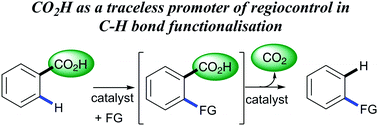
Chem. Commun., 2017,53, 5584-5597
https://doi.org/10.1039/C7CC01755C
Stereospecific functionalizations and transformations of secondary and tertiary boronic esters
This feature article discusses the range of stereospecific transformations available to enantioenriched boronic esters, and their applications in synthesis.
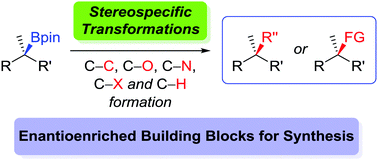
Chem. Commun., 2017,53, 5481-5494
https://doi.org/10.1039/C7CC01254C
Quantifying and understanding the steric properties of N-heterocyclic carbenes
This Feature Article presents and discusses the use of different methods to quantify and explore the steric impact of N-heterocyclic carbene (NHC) ligands.
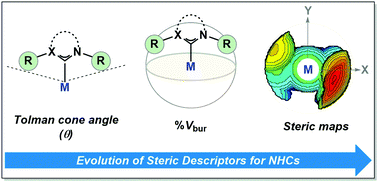
Chem. Commun., 2017,53, 2650-2660
https://doi.org/10.1039/C7CC00255F
Polymers from sugars: cyclic monomer synthesis, ring-opening polymerisation, material properties and applications
This feature article gives an overview of sugar-based polymers that can be made by ring-opening-polymerisation and their applications.
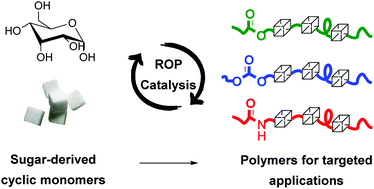
Chem. Commun., 2017,53, 2198-2217
https://doi.org/10.1039/C6CC09578J
Rigidification or interaction-induced phosphorescence of organic molecules
This feature article presents the principles and most recent examples of organic molecules in which long lived and highly intense room-temperature phosphorescence is switched on by rigidification of the matrix in a crystal or in a polymer or by interaction with other molecules.
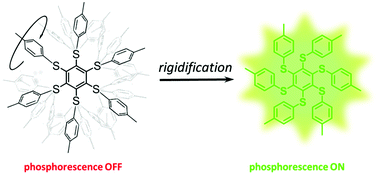
Chem. Commun., 2017,53, 2081-2093
https://doi.org/10.1039/C6CC09288H
Synthesis of fully arylated (hetero)arenes
This article reports the synthesis of fully arylated (hetero)arenes and categorizes this emerging topic by the type of (hetero)arene core and the type of chemistry employed to install the (hetero)aryl substituents.
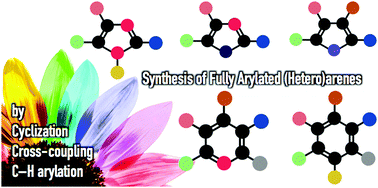
Chem. Commun., 2017,53, 1568-1582
https://doi.org/10.1039/C6CC09550J
Properties and emerging applications of mechanically interlocked ligands
We discuss the properties and potential future applications in catalysis, sensing and materials of ligands based on mechanically interlocked molecules.
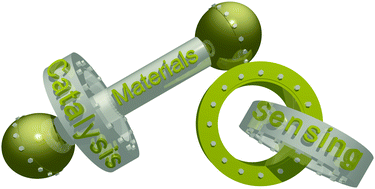
Chem. Commun., 2017,53, 298-312
https://doi.org/10.1039/C6CC07377H
Modular synthesis of thirty lead-like scaffolds suitable for CNS drug discovery
A modular synthetic approach was developed that yielded thirty diverse lead-like scaffolds suitable for CNS drug discovery.
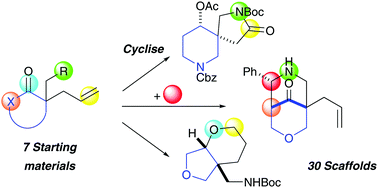
Chem. Commun., 2017,53, 12345-12348
https://doi.org/10.1039/C7CC06078E
Room-temperature synthesis of core–shell structured magnetic covalent organic frameworks for efficient enrichment of peptides and simultaneous exclusion of proteins
Core–shell structured Fe3O4@COFs were synthesized and used as a new absorbent for efficient enrichment of peptides and simultaneous exclusion of proteins.
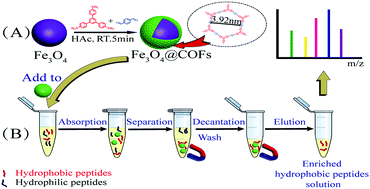
Chem. Commun., 2017,53, 3649-3652
https://doi.org/10.1039/C7CC00482F
Glucose selective bis-boronic acid click-fluor
Four novel bis-boronic acid compounds were synthesised via copper catalysed azide–alkyne cycloaddition (CuAAC) reactions.
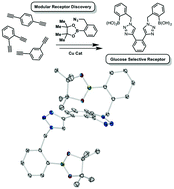
Chem. Commun., 2017,53, 2218-2221
https://doi.org/10.1039/C6CC08534B
From 2-methylimidazole to 1,2,3-triazole: a topological transformation of ZIF-8 and ZIF-67 by post-synthetic modification
We report the first examples of the simultaneous non-assisted replacement of ligands and the conversion of topology in MOFs by applying the PSM approach.
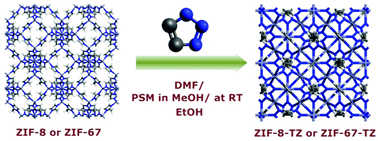
Chem. Commun., 2017,53, 2028-2031
https://doi.org/10.1039/C6CC08746A
Bio-orthogonal “click-and-release” donation of caged carbonyl sulfide (COS) and hydrogen sulfide (H2S)
The inverse-electron demand Diels–Alder (IEDDA) click reaction between thiocarbamate-functionalized trans-cyclooctenes and tetrazines provides a new strategy for bio-orthogonal COS/H2S delivery.
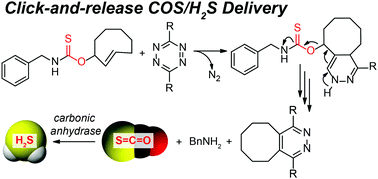
Chem. Commun., 2017,53, 1378-1380
https://doi.org/10.1039/C6CC09547J
A soluble conjugated porous organic polymer: efficient white light emission in solution, nanoparticles, gel and transparent thin film
A multifunctional, solution processable, ultramicroporous polymer employed for white light emission in solution, nanoparticles, a gel and a transparent thin film.
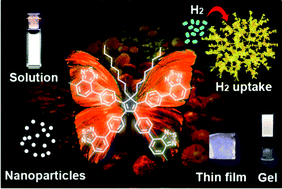
Chem. Commun., 2017,53, 1257-1260
https://doi.org/10.1039/C6CC08903H
Green and highly efficient synthesis of perylene and naphthalene bisimides in nothing but water
A green one-pot hydrothermal route quantitatively generates high-purity fluorescence bisimide dyes without the need for catalysts or organic solvents.
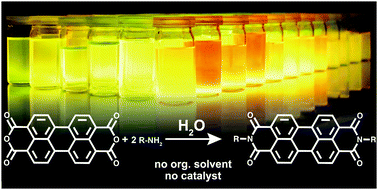
Chem. Commun., 2017,53, 1229-1232
https://doi.org/10.1039/C6CC06567H
Coupling of C(sp3)–H bonds with C(sp2)–O electrophiles: mild, general and selective
The general coupling of amine/ether C(sp3)–H bonds with alkenyl/(hetero)aryl C–O electrophiles is reported with high selectivity.

Chem. Commun., 2017,53, 1192-1195
https://doi.org/10.1039/C6CC09685A
Catalyst-free N-methylation of amines using CO2
In this study, we have developed a catalyst-free N-methylation of amines to prepare numerous methylamines using CO2 as a methyl source, utilizing 2 eq. PhSiH3 as the reductant.

Chem. Commun., 2017,53, 1148-1151
https://doi.org/10.1039/C6CC09072A